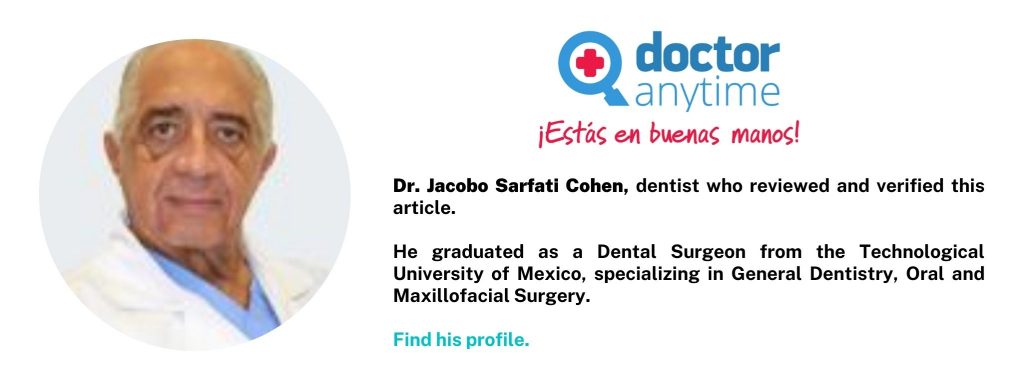Autor: Doctoranytime
Periodontitis is also known in Mexico as Periodontitis or periodontal disease and commonly known as pyorrhea (when there is pus). We begin by defining the term Periodontitis which comes from the words Perio (around), odontos (tooth), and itis (inflammation).
When an individual starts an inflammatory process of gums it is called gingivitis which comes from the terms Gingiva (gum) and itis (inflammation). Therefore it is important to consult a dentist whenever you realize gum problems.
There are three types of gums:
- Free gum: Approximately 0.5 to 1 mm, attached to the margin or neck of the teeth.
- Gum inserted: Gum lining over bone and tooth root.
- Sliding gum: That reaches the bottom in a union or with the lips or with the cheek and that is known as sack bottom.
How does it start?
When the gum is inflamed, it is called Gingivitis and it can be due to several factors; the trauma of a brush with the firm or hard bristles, lack of massage in the brushing of the gums, and/or the accumulation of food and cells of desquamation by badly cleaning that also can be accompanied by pain, change of color and/or bleeding.
If this does not improve quickly and is not corrected, the bad odor can occur and progress, to the extent that it becomes an infection that can alter the shape or architecture of the gum and when separated from the margin can form a periodontal pocket. This can be improved with a good professional cleaning and the changes in the gum can be minimal, in addition to professionally advising on the use of a good brush, a good brushing technique, use of floss, use of interdental brushes or gum stimulator, and scheduling frequent visits to the dental office.
If the gum persists inflamed or bleeding, it can separate from the neck of the tooth and produce a space or periodontal pocket, which may already be deeper (more than 2 millimeters) and where deposits of tartar (remains of food that are calcified with the passage of days, flaking cells and production of bacteria) accumulate and when they penetrate the interior of the gum they can produce periodontitis or periodontal disease.
When to see a doctor?
The structures that comprise the periodontium or periodontium are the bone, fibers, ligament, and the dental root, where structural changes are already noted, there may be bone loss or become a porous bone, there is the loss of fibers and the periodontal ligament that can produce dental mobility, painful bite or have unprovoked discomfort, which is not easily eliminated with painkillers and rinses and many patients self-medicate thinking that this is solved.
This is where the collaboration of the dentist or specialist (periodontist) comes in. Where deep cleaning is required, to remove the tartar with special instruments and appliances and to smooth the surfaces, both from the root, as well as from the bone, and which can also be done with the help of gum surgery (open gum and flaps).
When the periodontal disease or periodontitis is already chronic and advanced, bone or gum grafts may be required, as the case may be. On many occasions, teeth are lost due to a lack of a good foundation or support, despite surgery. When the causes of periodontitis have been treated with surgery and flaps, it is often necessary to splint the teeth (i.e., a tooth to tooth bonding) to prevent them from not moving and to ensure that they are stable while both the bone and gum are integrated and deflated.
This disease is not only found in adults (although its percentage is very high), it can also be seen in young people and children, although it can also appear in women in stages of pregnancy or hormonal changes.
We thank the collaboration of Dr. Jacobo Serfati Cohen, dentist. He graduated as a Dental Surgeon from the Technological University of Mexico, specializing in General Dentistry, Oral and Maxillofacial Surgery.




